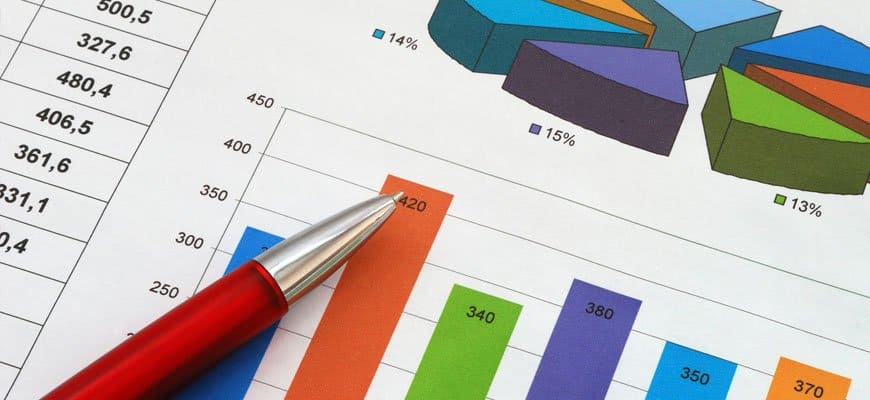Having a structured logistics process is essential for companies that work with large movements. That is why the Logistics Performance Indicators, that is, quantitative metrics that assess the performance of a company’s key processes.
These help managers to seek continuous improvement in their business processes and serve as a starting point for decision making. In practice, they help to create a culture of excellence, since at all times the company’s professionals will be looking to optimize these indicators.
When we talk about logistics performance indicators, it is common to think of KPIs related to the transport sector, or the path that the product takes from the factory to the place of delivery. However, it is important to remember that the logistics processes of any company begin earlier, when the inputs are still in the industry.
It is necessary to have very well defined organization and processes to optimize resources in the internal management of products. In the eagerness to think about how to reduce transport costs, it is common for managers to forget to fix what is wrong in the house. Therefore, we have separated here a list of eight logistics performance indicators related to internal processes, where at least a considerable part of the process is carried out before transport on the road.
1- Inventory Accuracy
This indicator helps you understand if your inventory is organized or not. To arrive at this metric, just find the percentage of the number of products that are actually in physical stock in relation to the number of products indicated in the system. The closer to 100%, the better it is for your business.
However, due to failures such as breakdowns and obsolescence, the tendency is for this number to be a little lower. If what’s in your system doesn’t match what’s actually in stock, the company may have problems checking availability and volume of issues, for example.
Therefore, it is very important that the percentage of accuracy is as high as possible.
2- Average Inventory Level
When we talk about stock, the ideal scenario is to have a quantity of items stored that avoid excesses, but also that there is never a shortage of the product for sale. To find this “ideal average level”, it is necessary to follow the demand and the availability index of the items over time.
Excess inventory can increase operating cost and even cause losses, depending on the item. On the other hand, stockouts mean lost sales and poor customer experience.
3- Inventory Maintenance Cost
Keeping inventory generates cleaning, personnel, maintenance costs, among others. An interesting way to assess whether this money is being well spent is to measure what value would be obtained if this amount were invested in the financial market.
Properly analyzing this data allows you to understand if your inventory maintenance efforts are actually generating good results.
4- Damage and Loss Index
Directly related to the inventory accuracy, this index will reflect the amount of product you are losing due to problems in the company. We call “breakdown” any damage (such as dents and broken parts) caused at some point in the process (from handling at the factory to transport). Loss is when the item disappears before reaching its final destination
The ideal is always to observe this percentage and try to identify those responsible for damage and loss. In addition to bringing a direct financial loss, it is a problem that also harms customers.
5- OFR – Order Fill Rate
Time is money and in the industry this is even more latent. This indicator represents the internal time spent to fulfill an order, that is, from receipt of the request to dispatch to the carrier or other means of delivery.
As the manager has much more control over their internal processes in relation to what happens to the product after it leaves the factory, this is one of the most viable metrics to optimize. It is important to have a good frequency of measurement of this time, even to understand if the team is evolving or not.
6- Profit per Employee
Do you know how much revenue each employee generates for you? Having 10 employees generating R$4 thousand reais each can be more profitable than having 50 employees generating R$2 thousand. Therefore, it is important to evaluate what is the cost you have with each professional in the logistics sector and what is their average return to find the equation with the best efficiency.
Searching for qualified professionals and offering training is a way to optimize this process and, consequently, achieve greater profit.
7- Employee idle time
Do you know how much time your logistics operators spend idle or actually working? Managers do not always have this control, as technology is usually needed.
However, it is worth investing in a solution staff management to understand what this movement is like within the factory and identify the main bottlenecks and problems of the operation.
8- ROI (Return on Investment)
Whenever it comes to business metrics, we need to talk about return on investment, as this is a crucial performance indicator for any company. Of course, to calculate the ROI of the entire operation, it is also necessary to take into account the expenses of external logistics, with transport to the customer.
To calculate it, simply apply the formula [Revenue – cost/cost]. Multiply that number by 100 and you get, as a percentage, your return on investment. Having a positive ROI is essential to know if your operation is on the right track and if you are ready to invest even more in the business.
Technology to measure and improve logistics performance indicators
In the busy routine of a logistics manager, it is not always possible to calculate all the metrics and create a strategy to increase efficiency. However, in times of Lean Manufacturing, making processes more optimized is a must for those who don’t want to be left behind.
In this scenario, technology can be a great ally. THE innovation is the bet of major players in the market to continue growing. Novidá works with systems of indoor geolocation that bring great benefits in this regard. For example, by tagging products in the inventory, it is possible to know their accuracy, understand the movement of items in the plant and avoid damage.
The tag can also be installed on employee badges, which gives the manager the possibility to track the moving them during the day, checking opportunities for optimizations and increasing profit per employee.
Understand better how Novidá can help you improve your Logistics Performance Indicators!





